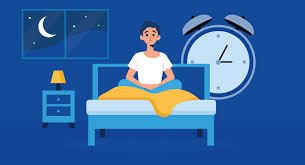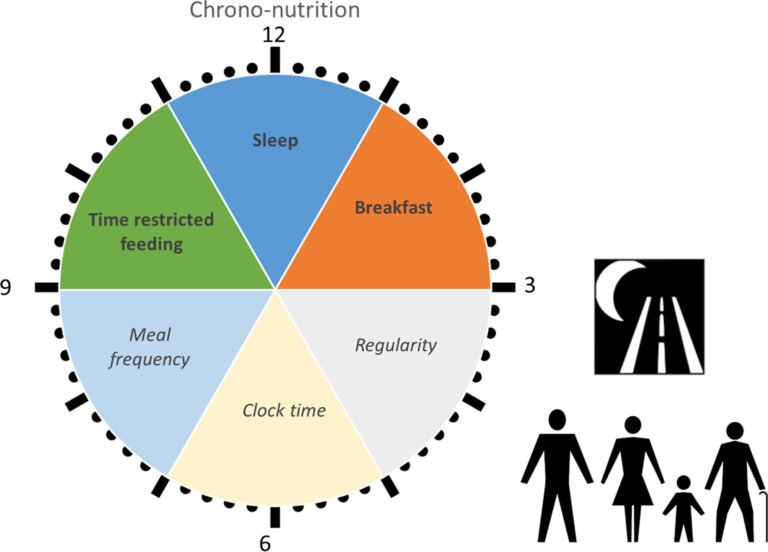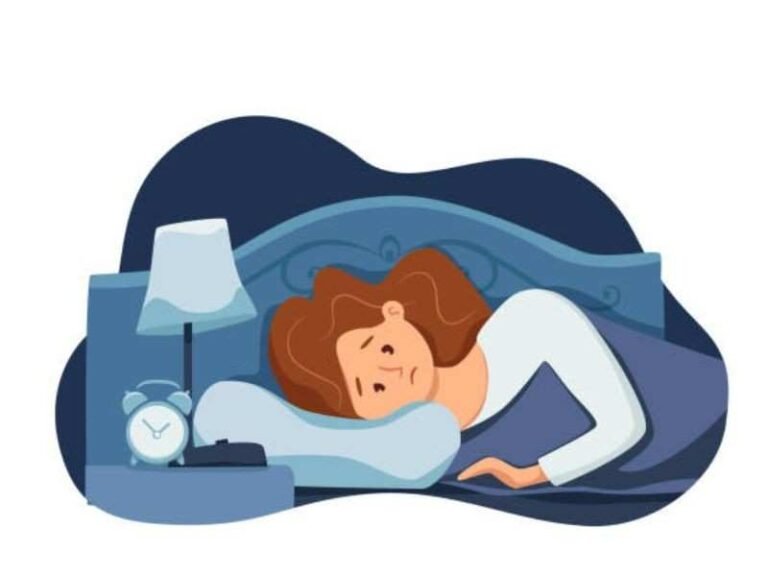Crafting Sleep Hygiene: Create a Sanctuary, Not Just a Bed
Sleep is one of the most essential, yet often overlooked, pillars of health. While nutrition and exercise are constantly in the spotlight, sleep remains the quiet, underestimated sibling—until we lose it. In a world buzzing with notifications, glowing screens, and never-ending to-do lists, getting quality rest has become more of a luxury than a given. But what if we could transform our bedrooms into sanctuaries, where sleep is not merely a break from the day, but a deeply restorative ritual? That’s the heart of sleep hygiene: crafting not just a bed, but a sanctuary.
Why Sleep Hygiene Matters More Than Ever
Modern life has disrupted our sleep more than any generation before us. The late-night glow of Netflix binges, the temptation of “just one more email,” and the overstimulation of social media have rewired our brains to stay alert long after dusk. Meanwhile, stress, diet, and environmental noise all conspire to sabotage rest.
Sleep hygiene—a term used to describe the set of habits and environmental adjustments that promote better sleep—goes beyond simply “going to bed earlier.” It’s about creating the conditions, physically and mentally, where sleep comes naturally, deeply, and refreshingly.
Why does this matter? Because poor sleep is linked to nearly everything: mood swings, impaired cognition, weakened immunity, cardiovascular disease, weight gain, and even shortened lifespan. Essentially, neglecting sleep is like skipping oil changes for your car—you won’t break down immediately, but the wear and tear is inevitable.
The Foundation of a Sleep Sanctuary
Before diving into specifics, let’s define what a sleep sanctuary is. A sanctuary is more than a space; it’s a refuge. It’s where you feel safe, calm, and removed from the chaos of the outside world. Translating that into sleep means designing your bedroom to actively support rest, relaxation, and recovery.
The pillars of a true sleep sanctuary include:
- Environment: The physical design and sensory elements of the room.
- Rituals: The habits and routines that signal your body it’s time to rest.
- Mindset: Cultivating mental calmness and boundaries around rest.
Let’s explore each of these in detail, while also weaving in practical, topic-specific strategies.
How to Transform Your Bedroom into a Sleep Sanctuary
Your bed may be the centerpiece, but your whole room should whisper “relax.”
- Declutter: Less is more. Clear out piles of laundry, work files, and stray gadgets.
- Comfort: Choose supportive mattresses and breathable bedding.
- Lighting: Use dimmable lamps and blackout curtains to mimic natural rhythms.
- Scents & sounds: Add lavender sprays or calming white noise machines.
- Temperature: Keep it cool—around 60–67°F (15–19°C).
By blending comfort and calm, you shift your bedroom from a place of chaos into a true sanctuary.
The Best Weighted Blankets for Anxiety and Deeper Sleep
Weighted blankets use deep pressure stimulation to calm the nervous system. They can:
- Reduce anxiety by lowering cortisol.
- Improve sleep by encouraging serotonin and melatonin release.
- Promote feelings of safety and comfort.
Tips for choosing:
- Pick a blanket that’s about 10% of your body weight.
- Go for breathable fabrics like cotton or bamboo.
- Cooling weighted blankets are ideal for hot sleepers.
These aren’t just trendy accessories—they’re science-backed tools for deeper rest.
Choosing Blackout Curtains for Shift Workers’ Sleep Schedules
For shift workers, sunlight at the “wrong” time wreaks havoc on circadian rhythms. Blackout curtains:
- Block intrusive daylight.
- Reduce noise when layered with heavy fabric.
- Help maintain a cool, dark environment.
What to look for:
- Thermal lining for insulation.
- Floor-to-ceiling length to eliminate gaps.
- Easy-to-install rods or tracks.
Pair them with sleep masks or white noise machines for maximum effect.
A Beginner’s Guide to Yoga Nidra for Sleep
Yoga nidra, or “yogic sleep,” is a guided meditation that takes you into a state between wakefulness and sleep.
Benefits:
- Lowers stress and anxiety.
- Improves emotional regulation.
- Encourages restorative rest.
Simple practice:
- Lie down comfortably.
- Close your eyes and focus on slow breathing.
- Follow a guided script (many are available via apps or YouTube).
Even 20 minutes of yoga nidra can feel like hours of restorative sleep.
The Ultimate Digital Detox Routine for Better Sleep
Technology is both a blessing and a curse. Blue light delays melatonin, and endless scrolling keeps the brain alert.
Digital detox steps:
- Set a “digital sunset” an hour before bed.
- Use apps that limit screen time at night.
- Replace screen habits with reading, journaling, or stretching.
- Keep devices out of the bedroom.
Even small reductions in nighttime screen use can drastically improve sleep quality.
The Best Calming Paint Colors for Your Bedroom
Color psychology plays a major role in mood and sleep.
- Soft blues: Evoke peace and stability.
- Sage greens: Grounding and refreshing.
- Lavender hues: Gentle and soothing.
- Warm neutrals: Cozy and cocoon-like.
Avoid overstimulating colors like bright red or neon tones. Pair calming paint with soft lighting and cozy textures for a full effect.
How to Effectively Block Blue Light from Windows
Natural blue light in the morning is beneficial—but at the wrong time, it’s disruptive.
Solutions:
- Install blue-light filtering window films.
- Use specialized blinds or tinted glass.
- Combine with blackout curtains for extra effect.
For an affordable alternative, pair standard curtains with a quality sleep mask.
Bedtime Routine Ideas for Adults Seeking Better Sleep
Your pre-sleep routine trains your brain for rest. Here are a few sample rituals:
- 15-minute routine: Herbal tea + skincare + light reading.
- 30-minute routine: Journaling + stretching + meditation.
- 60-minute routine: Digital detox + warm shower + breathwork + gratitude journaling.
Pick and mix based on your schedule. The key is consistency.
The Science of Sleep Cycles
Understanding how sleep works helps you appreciate why hygiene matters. Sleep is composed of stages:
- NREM Stage 1: Light sleep, drifting in and out.
- NREM Stage 2: Deeper relaxation, slowed heart rate.
- NREM Stage 3: Deep sleep—physical repair, immune strengthening.
- REM Sleep: Dreaming stage—mental and emotional processing.
Disrupted sleep hygiene often fragments these cycles, depriving you of full restoration. For instance, alcohol may knock you out quickly but reduces REM sleep, leading to grogginess and poor focus the next day.
Beyond the Bedroom: Daytime Habits That Influence Sleep
Sleep hygiene isn’t confined to bedtime. What you do during the day shapes your night.
- Morning Sunlight: Exposure to natural light in the morning resets your circadian rhythm.
- Balanced Meals: Diet influences sleep hormones. Complex carbs and magnesium-rich foods like nuts, leafy greens, and dark chocolate support rest.
- Hydration Timing: Drink enough water during the day, but taper off in the evening to avoid midnight bathroom trips.
- Nap Strategy: Power naps (20–30 minutes) can boost energy, but long or late naps may sabotage nighttime sleep.
A Holistic View: Sleep as Self-Care
Ultimately, crafting sleep hygiene is a form of self-respect. You are creating a sanctuary that honors your need for restoration. It’s not indulgent; it’s foundational. Just as we brush our teeth to protect dental health, we should protect our sleep environment and rituals to safeguard mental and physical health.
Conclusion: Create a Sanctuary, Not Just a Bed
Your bed may be where you sleep, but your sanctuary is where you heal, grow, and restore. By focusing on environment, rituals, and mindset—and weaving in tools like weighted blankets, blackout curtains, yoga nidra, and digital detox—you transform rest from a passive state into an active practice of self-care. Sleep hygiene isn’t about perfection; it’s about consistency and intention.
So tonight, instead of collapsing into bed, step into your sanctuary. Let your room, your rituals, and your mindset embrace you into the rest you deserve.
Frequently Asked Questions (FAQs)
1. How do I turn my bedroom into a sleep sanctuary?
Start by decluttering your room, keeping it cool (60–67°F), blocking light with blackout curtains, using calming colors, adding relaxing scents like lavender, and investing in a supportive mattress and pillows. These steps signal your brain that your bedroom is a place of rest, not stress.
2. What are the best colors for a sleep-friendly bedroom?
Soft blues, sage greens, lavender, and warm neutrals are the most calming colors for bedrooms. These shades reduce mental stimulation and promote a sense of relaxation, making it easier to fall asleep.
3. Do weighted blankets really help with sleep?
Yes! Weighted blankets use gentle pressure to reduce anxiety, calm the nervous system, and promote deeper sleep. The ideal blanket is about 10% of your body weight and made from breathable materials like cotton or bamboo.
4. Are blackout curtains good for sleep hygiene?
Absolutely. Blackout curtains block external light, regulate temperature, and help maintain consistent circadian rhythms. They’re especially beneficial for shift workers or anyone sleeping during daylight hours.
5. What is the best bedtime routine for adults?
A strong routine might include unplugging from screens 30–60 minutes before bed, light stretching or yoga nidra, journaling, sipping herbal tea, and reading a calming book. Consistency is the key—your body learns to associate these rituals with rest.
Your brain needs fuel too—learn how the right diet can boost your mood and energy in our healthy eating guide.”
For more tips and support, visit our Facebook page.






